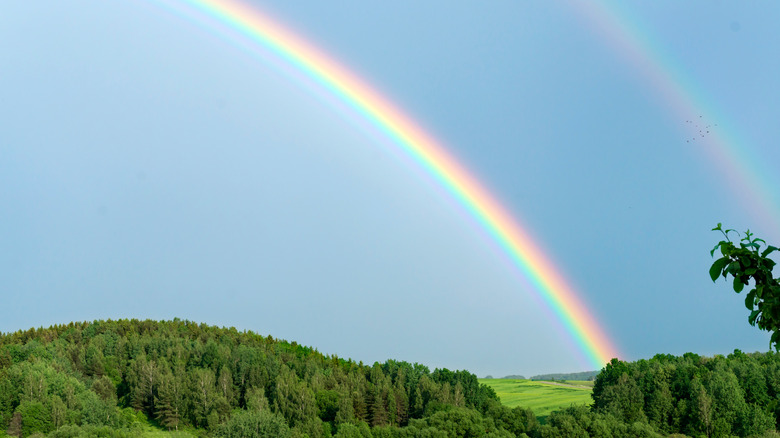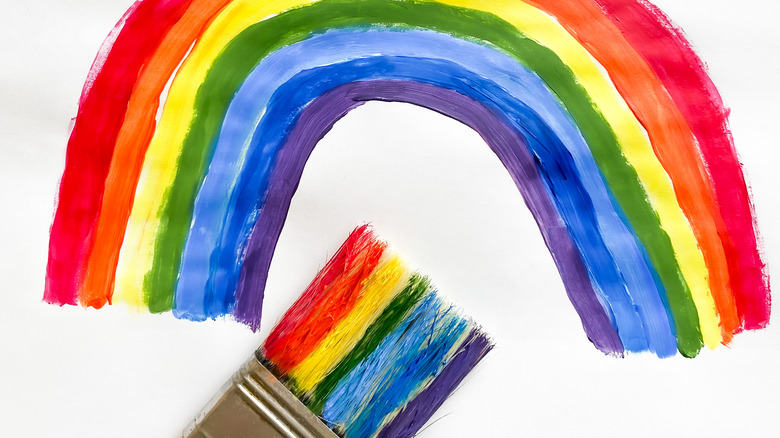The Truth About The Backside Of A Rainbow
According to the Bible, a rainbow was sent as a sign from God that he would never flood the earth again (via Live Science). Scientifically speaking, a rainbow is formed when light strikes water droplets. When the light is both refracted and reflected by water, the cards align and a rainbow is born.
At the right angle, they form a classic colorful arc with the primary colors always in order of their wavelength (via National Geographic). Red, orange, green, blue, purple — the colors are all there. And as long as there's moisture in the air, a rainbow can form virtually anywhere. Sometimes something spectacular happens and a double rainbow (pictured above) is formed when water reflects twice on a raindrop.
Beyond this, there are various different types of rainbows, including a supernumerary rainbow (pastel-colored and generally pretty thin) and a reflected rainbow (those on bodies of water or wet surfaces), among others. Rainbows are also incredibly symbolic and can be found in several cultures around the world. Most famously, the pride flag, which represents the LGBTQ+ community, is a rainbow.
Everyone knows that they can see the front of a rainbow, but what about the backside? Is there something different to observe, or nothing at all?
Is the back of a rainbow the same as the front?
According to West Texas A&M University, a rainbow does not have a backside, because it's not a physical object. A rainbow is a pattern of light. It only becomes a concrete image if it's captured at the right angle. That being said, the sun will always be directly behind the head of whoever is viewing a rainbow. This is the only way for the light to enter the human eye and thus allow the rainbow to appear.
In the end, a rainbow is only sunlight that has been refracted and reflected. If someone were to walk around the other side of the rainbow, they would sadly find nothing. On the bright side, two people standing next to each other will never see the same rainbow (via Live Science). Water droplets are always in motion and thus, are constantly changing. Furthermore, the eyes of two different people can't inhabit the same place at the same time. In other words, each person is viewing a different rainbow that is unique to them and only them.
Oddly enough, rainbows are not distinct to earth. Per National Geographic, some scientists believe that they can also be found on Titan, a moon of the planet Saturn.

